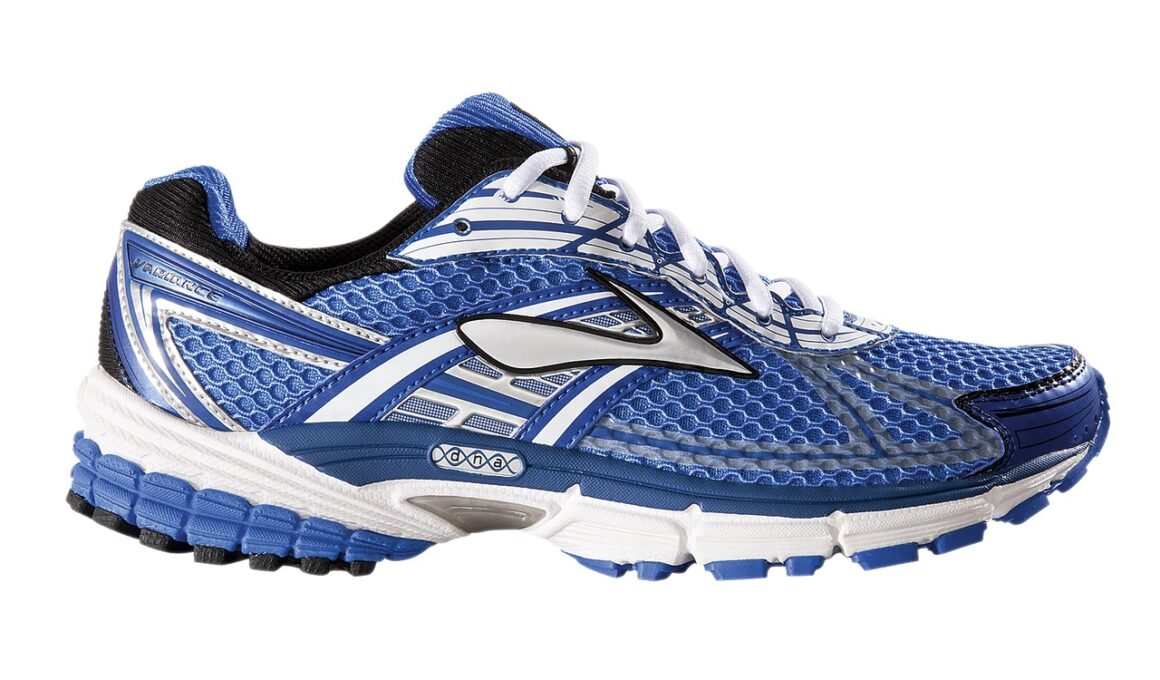Effect of Shoe Fit on Balance and Coordination
Proper shoe fit plays an essential role in enhancing balance and coordination. Footwear that is too tight or too loose can lead to various issues, including instability and reduced mobility. An ill-fitting shoe may cause discomfort, resulting in an unnatural gait, which can subsequently affect stability. The primary purpose of shoes is to protect our feet while providing necessary support. Comfortable shoes should fit snugly without causing pain or excessive pressure. The materials used in the construction of shoes can either improve or diminish foot alignment and motion. Therefore, when selecting shoes, one should consider both size and width, ensuring adequate toe space. The arch support is also critical as it helps distribute weight evenly, reducing the risk of injuries. For certain activities, like running or dancing, specific shoe types are designed to optimize performance. Adopting appropriate footwear will not only feel better but will enhance overall movement fluidity. Additionally, it is important to remember the importance of sock choice to prevent moisture buildup, which can lead to blisters and discomfort during physical activities, further impacting balance. Proper shoe fit contributes greatly to sustaining a healthy lifestyle.
In addition to shoe fit, the design of footwear significantly impacts balance and coordination. Shoes with poor construction can lead to a higher risk of falls and other accidents, especially in older adults. A well-designed shoe typically includes features like cushioning, shock absorption, and a supportive sole that allows for natural movement. When shoes are specifically designed for given activities, they enhance proprioception, the body’s ability to recognize its position in space. A shoe that is too rigid may restrict movement, causing balancing issues, while overly flexible shoes may not provide adequate support. Thus, finding the right balance in shoe design is essential. The heel height also plays a crucial role; shoes with high heels may adversely affect stability. Those who regularly wear high-heeled shoes may struggle with coordination due to shifts in weight distribution. Additionally, having a non-slip sole helps in various conditions, providing more grip on different surfaces. In summary, the overall design features of shoes—including height and materials—contribute to one’s balance and coordination, making it vital to choose thoughtfully for activities.
Footwear also plays a crucial role in optimizing athletic performance. When engaging in sports, the specific requirements vary widely, thus necessitating different shoe types. Athletes often prioritize footwear that supports their activities, aiming to enhance balance and minimize injury risk. Proper footwear can lead to improved agility during sports like basketball and soccer, where rapid direction changes are common. Shoes designed for agility often have a lower profile and provide lateral support, crucial for maintaining balance. Moreover, running shoes have specific characteristics, including cushioning for shock absorption to retain energy. These designs help stabilize the foot upon impact, enhancing overall foot control. Wearing the correct shoes tailored to individual athletic practices allows athletes to achieve their best performance levels. Over time, poor shoe choices can lead to chronic pain or injuries, affecting long-term coordination. Therefore, regular evaluations of foot type and condition are essential to choose suitable footwear. Investing in quality athletic shoes, therefore, becomes an essential aspect of maintaining not just performance, but balance and overall physical health.
Impact of Regular Shoe Replacement
Regular shoe replacement is vital for maintaining optimal balance and coordination. Over time, shoes lose their supportive qualities, becoming ineffective in impacting our stability. Investigating signs of wear can prevent unstable footing, as worn-out shoes can lead to discomfort and injuries. A shoe’s structure can weaken, particularly in the midsole, which absorbs shock and provides cushioning. When this feature is diminished, the risk of falls increases. Individuals should frequently assess their shoes to determine if they require replacement, particularly those involved in high-impact activities. Signs for replacement include worn treads, loss of cushioning, or visible tears. For those experiencing chronic foot pain, a change of footwear might be necessary to regain mobility and balance. Also, different seasons may require varied footwear, influencing grip and stability given weather conditions. For example, winter boots may provide better traction but could limit movement compared to summer trainers. People should not overlook the importance of having seasonal footwear that aligns with environmental demands. Finally, staying proactive in shoe maintenance and replacements is an effective way to prolong balance and coordination throughout various daily activities.
Foot health directly influences overall balance and coordination. When the foot sustains injuries or develops conditions such as bunions, plantar fasciitis, or metatarsalgia, it can severely impact stability. These conditions lead to altered gait patterns, which may result in difficulty with coordination. Footwear must accommodate such health concerns, providing ample space and arch support tailored to the individual’s needs. Choosing shoes with adaptive features ensures that pressure points are adequately managed, enabling better performance and discomfort alleviation. Additionally, orthotic inserts can beneficially enhance balance for those with specific foot issues, effectively redistributing weight. Maintaining proper foot health contributes to improved posture, as the alignment of feet affects our overall stance. Regular check-ups with a podiatrist can help in detecting potential issues early on, allowing for the selection of the most suitable footwear. Developing exercises to strengthen the foot and ankle can also enhance coordination and combat issues. In summary, prioritizing foot health and selecting appropriate footwear is crucial not only for comfort but also for maintaining effective balance and coordination across various settings.
Education on Footwear Selection
Education concerning footwear selection is paramount for promoting balance and coordination. Many consumers lack the knowledge necessary when choosing appropriate shoes, leading to misfit selections that can harm balance. Increasing awareness through educational campaigns can assist individuals in making informed choices. Key factors such as arch type, foot width, and proper sizing should be highlighted, emphasizing how these aspects affect mobility. One effective means of promoting awareness is through professional fitting services available in sporting goods stores. These services offer personalized assessments that guide individuals to appropriate choices. Workshops conducted by physical therapists or sports trainers can further enrich understanding of how shoe fit contributes to performance. Furthermore, online resources and platforms provide valuable insights regarding footwear types optimized for specific activities. Providing guidance on recognizing signs of wear can also empower individuals to proactively replace worn shoes. By fostering knowledge about the relationship between footwear and physical health, communities can enhance overall balance and coordination among their populations. Investing in education related to shoe selection ultimately builds a foundation for healthier lifestyles and improved mobility.
In conclusion, shoe fit has a direct and significant effect on balance and coordination. Individuals should consider various factors, such as fit, type, and material, when selecting footwear to ensure optimal function. Regular assessments of footwear conditions and periodic replacements are crucial to maintaining stability over time. Furthermore, prioritizing education on proper shoe selection empowers individuals to make choices that enhance not only their performance but also their overall health. As a society, recognizing the importance of footwear in physical function can be a transformative approach to promote healthier lifestyles. Footwear impacts daily activities profoundly, affecting not just athletes but also individuals engaged in regular routines. Anecdotal evidence supports that those who invest time in understanding their footwear needs significantly reduce risks of injuries and enhance mobility. By focusing on foot health and ensuring proper shoe selection, individuals can achieve substantial improvements in balance. Making conscious choices regarding footwear serves to better not just athletic performance but also overall quality of life. In summary, integrating proper shoe fit within fitness routines is essential for achieving lasting benefits related to balance and coordination.
To Summarize
Implementing proper footwear choices leads to a balanced and coordinated lifestyle. Ensuring accurate fit and style, along with regular replacements and education, are essential elements. Shoes are more than mere accessories; they influence our movement patterns and, subsequently, our physical health. Correct footwear enhances overall athletic performance while preventing injuries that could disrupt mobility. Thus, individuals should always prioritize finding the right shoe for their needs. Customization of footwear must factor individual foot conditions, health, and activities. Enhanced awareness can greatly improve the choices made in footwear selection. Additionally, investing in suitable shoes results in numerous long-term benefits, promoting lifelong well-being. Fitness professionals and healthcare providers should work together to raise awareness concerning the significance of correct footwear. By collectively focusing on footwear education, the path towards better balance and coordination becomes clearer. Ultimately, proactive measures towards choosing shoes can empower individuals towards healthier lifestyles. Undoubtedly, thoughtful footwear decisions will help sustain balance and coordination, establishing a solid foundation for physical activities.





